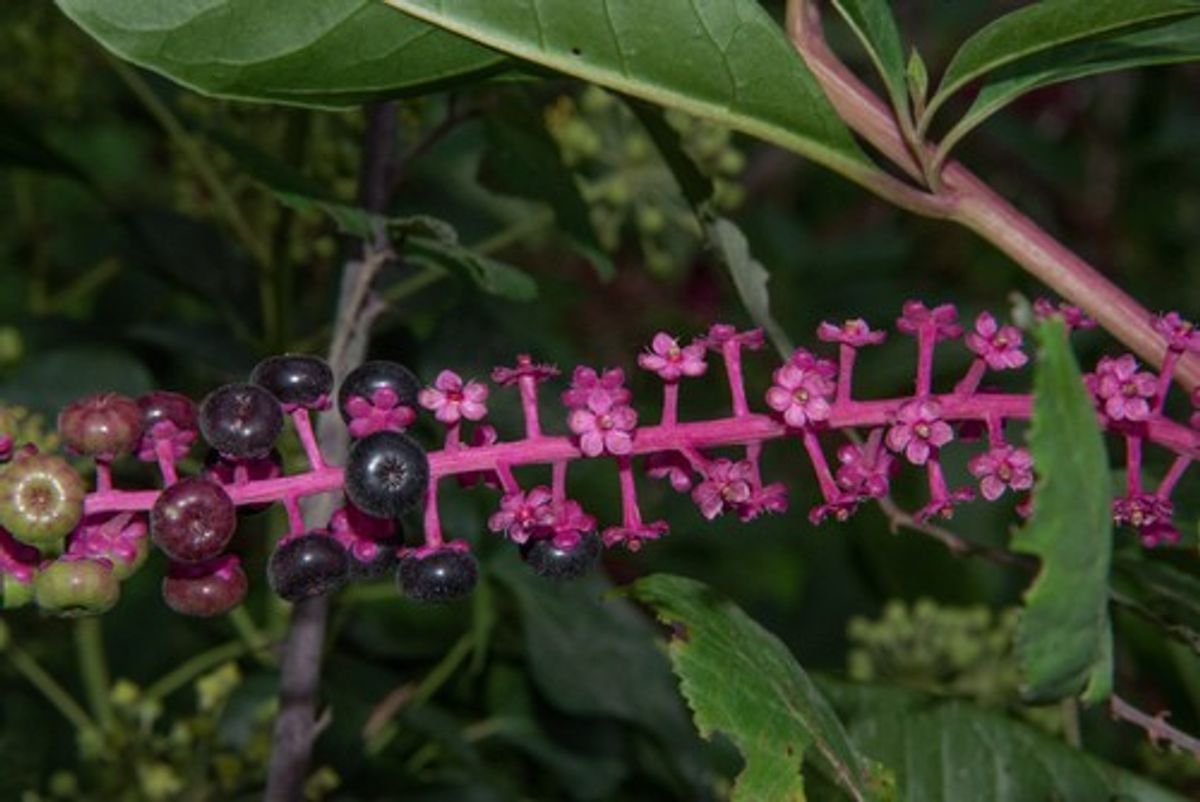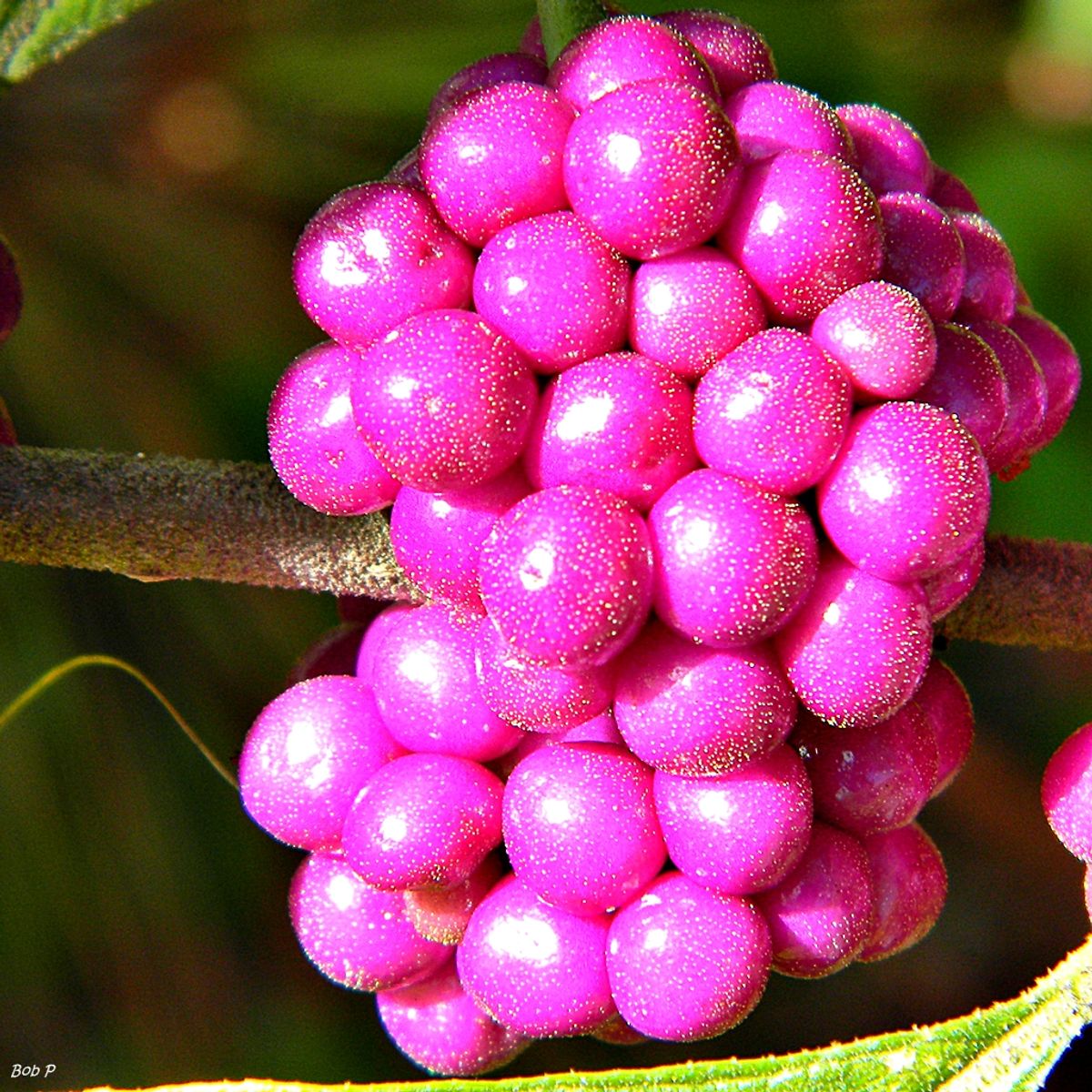Beauty berries, also known as Callicarpa berries, are a lesser-known fruit that has piqued the interest of foragers and food enthusiasts alike. In this article, we delve into the origins, nutritional value, harvesting techniques, and culinary uses of beauty berries to uncover whether they truly are a hidden edible gem.
Key Takeaways
- Beauty berries have a rich historical significance and have been used in various cultures for their ornamental and medicinal properties.
- They are packed with vitamins, minerals, and antioxidants that contribute to their potential health benefits.
- Beauty berries are typically harvested in late summer to early fall and can be used in jams, sauces, and beverages.
- The vibrant color of beauty berries adds a unique visual appeal to dishes and drinks.
- Exploring the culinary uses of beauty berries can open up a world of creative and flavorful possibilities.
Exploring the Origins of Beauty Berries

Historical Significance
The beautyberry, known scientifically as Callicarpa, has a rich history that intertwines with the lives of various cultures around the world. Its vibrant clusters of purple and pink berries have been a distinctive feature in gardens and wild landscapes for centuries. The plant’s presence is noted in early medicinal texts and folklore, suggesting its use in traditional remedies and protective rites.
In the context of historical cultivation and use, the beautyberry has been both a practical and an ornamental plant. Here is a brief overview of its historical significance:
- Medicinal applications: Various parts of the plant were used in traditional medicine.
- Aesthetic appeal: The striking color of the berries made them popular in ornamental gardens.
- Cultural symbolism: In some cultures, beautyberries were believed to have protective properties.
The beautyberry’s role in history is not just a tale of human utilization but also one of ecological importance. As highlighted in the snippet from ‘Plants at Their Peak: Bountiful Beautyberry!’, the plant adds ecological value throughout the year, not only as an autumn spectacle but also in other seasons, contributing to the biodiversity of the regions it inhabits.
Cultural Uses
The beauty berry, known botanically as Callicarpa, has long been admired for its vibrant, jewel-toned fruit clusters. Beyond their ornamental appeal, these berries have been woven into the cultural fabric of various societies. In North America, indigenous tribes recognized the utility of local flora for medicinal and cosmetic purposes, akin to the use of aloe and rosehip.
In many cultures, beauty berries were not only appreciated for their aesthetic contribution to gardens but also for their practical applications. For instance, the leaves of the beauty berry plant were traditionally used as a natural insect repellent. This practice highlights the plant’s dual role in both utility and beauty, satisfying a place in the garden and in everyday life.
While the berries are not widely recognized as a staple food source, they have been utilized in small-scale culinary experiments, often as a component in homemade jellies or syrups. The unique flavor profile of beauty berries, while not universally palatable, offers a distinct taste experience for those interested in exploring the full potential of this underappreciated fruit.
Botanical Characteristics
Beauty berries, scientifically known as Callicarpa, are a genus of shrubs and small trees renowned for their striking clusters of purple to violet berries. These plants are deciduous, meaning they shed their leaves annually, and are characterized by their opposite leaf arrangement and simple, serrated leaf margins.
The berries themselves are small, glossy, and tend to persist on the branches even after the leaves have fallen, providing a stark contrast against the bare stems in the winter landscape. Here is a brief overview of their botanical profile:
- Family: Lamiaceae
- Genus: Callicarpa
- Common names: Beautyberry, American beautyberry
- Foliage: Dark purple to green
- Berry color: Violet-purple to pink
Beauty berries are not only aesthetically pleasing but are also known for being deer resistant, making them a popular choice for gardeners looking to add both color and resilience to their landscapes.
Nutritional Value of Beauty Berries

Vitamins and Minerals
Beauty berries, often overlooked as a mere ornamental plant, are in fact a rich source of nutritional value. These vibrant berries boast a variety of vitamins and minerals that are essential for maintaining good health. For instance, they are a good source of vitamins A and C, which are crucial for immune function and skin health, respectively.
The mineral content of beauty berries should not be underestimated. They contain important minerals such as iron, which is vital for blood production, and potassium, which is necessary for proper heart and muscle function. The presence of these nutrients makes beauty berries a beneficial addition to a balanced diet.
Here is a brief overview of the key nutrients found in beauty berries:
- Vitamin A: Essential for vision and immune health
- Vitamin C: Important for collagen production and antioxidant defense
- Iron: Crucial for hemoglobin formation and oxygen transport
- Potassium: Necessary for heart, muscle, and nerve function
Antioxidant Properties
Beauty berries are not only prized for their vibrant color and unique taste but also for their remarkable antioxidant properties. These berries contain a variety of compounds that are known to combat oxidative stress, which can lead to cellular damage and a host of chronic diseases.
The primary antioxidants found in beauty berries include vitamins C and E, both of which play a crucial role in protecting the body’s tissues from free radical damage. The table below summarizes the key antioxidants present in beauty berries:
| Antioxidant | Function |
|---|---|
| Vitamin C | Protects cells and aids in the repair of bodily tissues |
| Vitamin E | Helps to maintain healthy skin and eyes, and strengthen the body’s natural defense against illness and infection |
Incorporating beauty berries into one’s diet could, therefore, offer a natural progression towards better health. Revered by Chinese royalty for its beauty and anti-aging properties, the berry has a history of being associated with longevity and vitality.
Health Benefits
While beauty berries are not as widely recognized for their health benefits as some other fruits, emerging research suggests they may have a variety of medicinal properties. Beauty berries have been traditionally used as an insect repellent, with crushed leaves known to ward off mosquitoes. This practical use extends beyond simple nutrition, indicating a multifaceted role in both health and environmental management.
In addition to their use as a repellent, beauty berries contain compounds that may contribute to skin health. Acai berries, often referred to as ‘beauty berries’ in Brazil, are rich in amino acids and immune system boosters that are believed to have anti-aging effects and restore skin health. While the specific benefits of beauty berries require further study, the potential for these berries to contribute to a holistic approach to well-being is intriguing.
The table below summarizes some of the potential health benefits attributed to beauty berries:
| Benefit Type | Description |
|---|---|
| Skin Health | May improve skin quality and have anti-aging effects. |
| Insect Repellent | Crushed leaves can repel mosquitoes. |
| Medicinal Properties | Contains compounds that may support overall health. |
Harvesting and Preparation of Beauty Berries

Seasonal Availability
The beauty berry, known for its vibrant display, has a specific season when it flourishes and is ready for harvest. The peak season for beauty berries typically spans from late summer to early fall, a period when the berries reach their full color and are most potent in flavor and nutrients. During this time, the berries transition from a subtle green to their characteristic bright, iridescent purple, signaling their readiness for picking.
To better understand the seasonal availability, consider the following timeline:
- Late Spring: Initial berry formation begins.
- Summer: Berries grow and slowly change color.
- Late Summer to Early Fall: Berries mature and are at their peak for harvesting.
This cycle aligns with observations from various sources, including nursery websites that highlight the plant’s seasonal behavior. For instance, Proven Winners® notes the early signs of the plant’s showiness in spring with dark purple foliage, while FastGrowingTrees.com emphasizes the impressive display of purple berries in September.
Harvesting Techniques
Once the beauty berries reach their peak ripeness, typically in late summer to early fall, the harvesting process can begin. Proper harvesting techniques are crucial to ensure the quality of the berries and the sustainability of the plants. Hand-picking is the most common method, allowing for selective harvesting of the ripest berries while minimizing damage to the plant, much like the gentle approach used for foraging wild serviceberries.
The following list outlines the basic steps for hand-picking beauty berries:
- Identify ripe clusters of beauty berries, which are typically a vibrant purple or magenta.
- Gently grasp the stem of a cluster and use a twisting motion to detach it from the plant.
- Place the harvested clusters into a container, being careful not to crush the delicate berries.
- Periodically check for and remove any damaged or unripe berries from the collected clusters.
It’s important to note that while hand-picking is labor-intensive, it is the preferred method for small-scale harvesting or personal use. For larger operations, mechanical harvesters may be employed, similar to the dry harvesting technique for cranberries. However, this can lead to a higher proportion of bruised or damaged berries, which may affect their culinary uses.
Culinary Uses
While beauty berries are not as commonly found in modern kitchens as other berries, their unique flavor profile has been explored in various culinary applications. Beauty berries can be transformed into jellies, syrups, and sauces, adding a distinctive touch to both sweet and savory dishes. Their slightly herbal and astringent taste pairs well with game meats and can be an intriguing addition to cocktails and desserts.
In terms of preparation, beauty berries should be properly cleaned and cooked to ensure safety and palatability. Here’s a simple guide to using beauty berries in your cooking:
- Ensure berries are ripe and free from pesticides.
- Wash thoroughly under running water.
- Cook down the berries to release their pectin, which is essential for jelly making.
- Strain the mixture to remove seeds and skins for a smoother texture.
- Sweeten or spice according to your recipe requirements.
Given their medicinal properties like antibacterial and anti-inflammatory agents, beauty berries have been a traditional remedy for various ailments. When incorporated into dishes, these properties can offer more than just flavor, potentially contributing to the diner’s overall health. However, it’s important to note that while sumac is a well-known spice with health benefits, beauty berries are distinct and should not be confused with other edible plants.
Frequently Asked Questions
Are beauty berries safe to eat?
Yes, beauty berries are safe to eat. However, it is important to ensure that you are correctly identifying the plant before consumption.
Do beauty berries have any medicinal properties?
Beauty berries are not known for their medicinal properties, but they are valued for their antioxidant content and potential health benefits.
Can beauty berries be used in cooking?
Yes, beauty berries can be used in cooking. They are often used in jams, jellies, and desserts for their unique flavor.
Are beauty berries easy to grow?
Beauty berries are relatively easy to grow in the right conditions. They thrive in well-drained soil and partial shade.
Do beauty berries attract wildlife?
Yes, beauty berries are known to attract birds and other wildlife, making them a popular choice for wildlife-friendly gardens.
Are beauty berries commonly found in grocery stores?
Beauty berries are not commonly found in grocery stores due to their delicate nature and limited shelf life. They are more commonly grown in home gardens or sourced from specialty nurseries.
